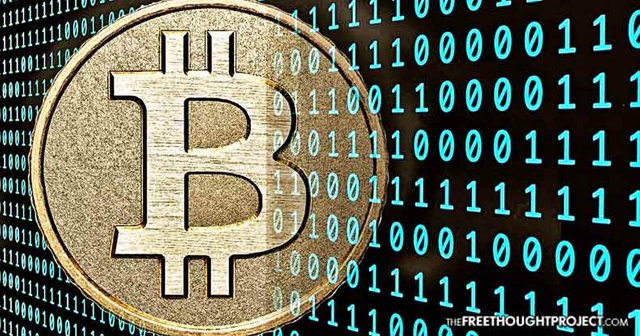Senior Intel Corp. Scientist Predicted Bitcoin In Cryptography Manifesto—In 1994
The world may never know the true identity (or identities) of Satoshi Nakamoto, the mysterious creator of Bitcoin, but the idea of cryptocurrency has actually been popular among crypto-anarchists and privacy experts for decades.
In fact, Timothy May, a senior scientist involved in the early years at the Intel corporation predicted the rise of cryptocurrencies in his 1994 manifesto "The Cyphernomicon." In the book, May prophesized about "sophisticated financial alternatives to the dollar, various instruments, futures, forward contracts, etc."
In chapter 16, May speaks of "Using software agents for money laundering and other illegal acts," and goes on to say that:
These agents act as semi-autonomous programs that are a few steps beyond simple algorithms. Real use could be as "digital cutouts": transferring wealth to other agents (also controlled from afar, like marionettes.) [The] advantage is that they can be programmed to perform operations that are perhaps illegal, but without traceability....The rise of AMIX-style information markets and Sterling-style "data havens" will provide new avenues for money laundering and asset-hiding. Information is intrinsically hard to value, hard to put a price tag on (it varies according to the needs of the buyers) meaning that transnational flows of information cannot be accurately valued (assigned a cash value.)In the following section, "Private Currencies, Denationalization of Money," May writes that "Lysander Spooner advocated these private currencies and 'denationalization of money' ... Alternatives to normal currency already exist, coupons, frequent flier coupons, telephone cards and coupons (widely used in Asia and parts of Europe.) Ironically, U.S. had mostly opted for credit cards, which are fully traceable and offer minimal privacy, while other nations have embraced the anonymity of their kind of cards."
Earlier this year, May gave a presentation at the hacker house Paralelní Polis in Prague where he recalled seeing Satoshi's now-famous white paper appear on one of his mailing lists.
“In the mid-2000s, around 2006-2007, a lot of people began revisiting digital currency. In 2008-2009 through the ‘cryptography mailing list’, the successor to the ‘cypherpunk’s mailing list,’ a person going by the name of Satoshi issued a white paper proposing a system which solved the Byzantine consensus problem in a novel way using Proof-of-Work,” May said.
His full presentation can be seen below:
In the past year, cryptocurrencies have rushed to all new highs in value, and have now reached a market capitalization higher than Bank of America. As of market close at the end of last month, Bank of America had a $277.35 billion market cap, while the market cap for cryptocurrencies at that time was roughly $285 billion.
Activists have had mixed feelings on cryptocurrencies over the years, but as more people learn about the intricacies involved, many are seeing the blockchain as a new battleground where war can be waged against central banks. Former Texas Congressman and Liberty advocate, Ron Paul, has recently been coming around to support cryptocurrency—even going so far as to tell CNN that Bitcoin could destroy the dollar, a day that he welcomes.
“There will be alternatives to the dollar, and this might be one of them," Paul said, noting he believes that if more people begin using Bitcoin, "it’ll go down in history as the destroyer of the dollar."
“As a firm believer in currency competition, I’m excited to see the options what bitcoin opens up,” he added.

This post has received gratitude of 1.00 % from @jout